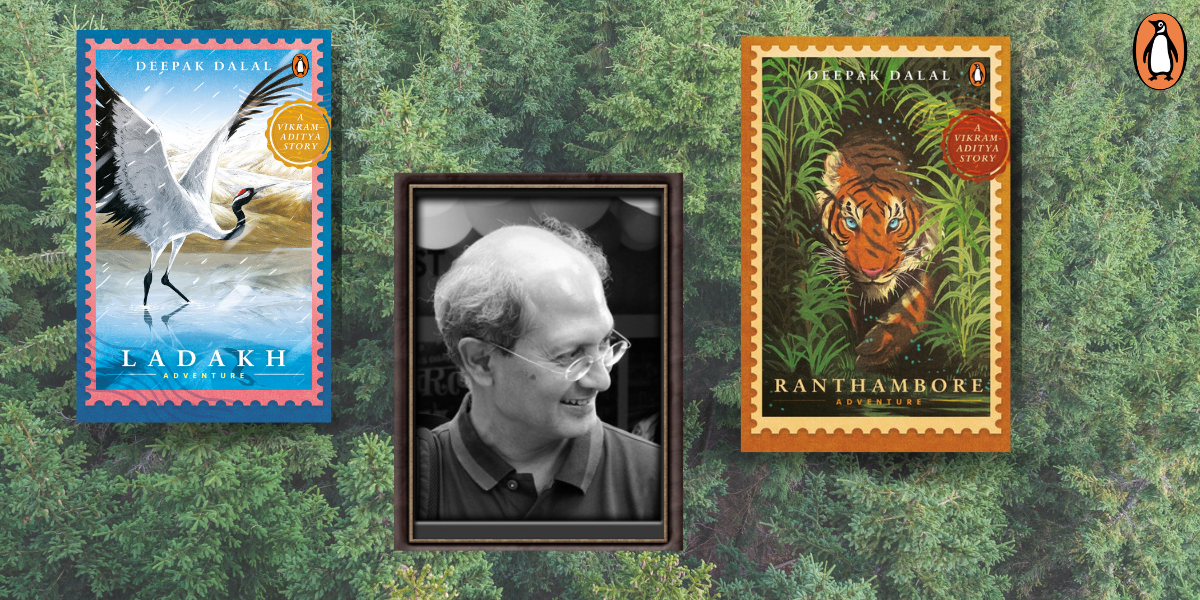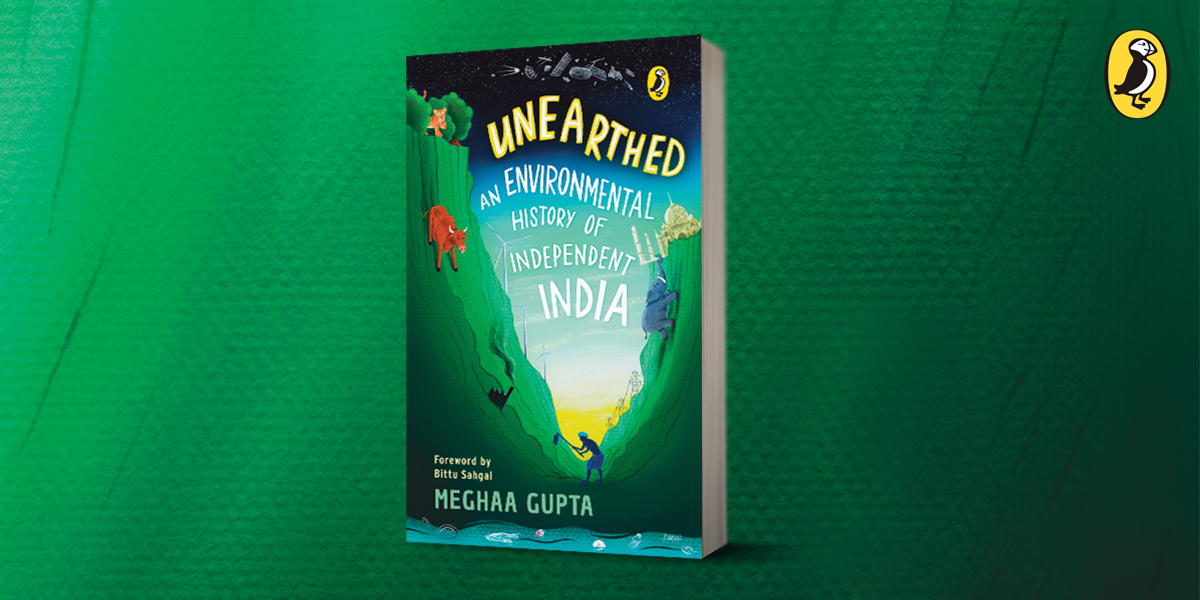From the Green Revolution to the National Action Plan on Climate Change, Unearthed: An Environmental History of Independent India chronicles the country’s historical movements and significant green missions since 1947. Interspersed with lots of trivia, tales of eco-heroes and humorous cartoons, this easy-to-read account uncovers the story of a past with the hope that we will rewrite India’s future.
Read below an excerpt from the book:
Elephants are the world’s largest land animals and they need a large area to live freely—not just a forest, but entire landscapes or ranges with paths they can use to walk from one place to another in search of food and water. After all, their needs are also big. An adult Asian elephant can eat more than 100 kilograms of food and drink more than 100 litres of water in a day. Just one forest is not enough to meet these needs. That’s why they walk hundreds of kilometres every year, allowing forests along their way to regenerate in time for them to return several months later. In the first few decades after Independence, India was on a development drive. Land was cleared to grow crops, natural forests were replaced by plantations or mined to support industry, rivers were dammed, roads were built, factories, power transmission lines and railway lines were set up in more places and the human population began to explode. No one really thought about leaving room for elephants. As their habitats were lost to development, cases of human-elephant conflict began to rise. Among the most common forms of this conflict was crop-raiding. Hungry elephants found an easy supply of food in farmlands. So, they ransacked crops worth a lot of money and sometimes ended up injuring and killing villagers. In retaliation, angry villagers slaughtered elephants by poisoning or electrocuting them.
States found themselves struggling endlessly with this mammoth problem. Finally, in 1989, the central government set up a task force to look into the details of the problems being reported by different states. Among other things, the task force found that elephants had disappeared from many places in which they were once found. It also noted that the wildlife reserves set aside during Project Tiger in 1973 were woefully inadequate for elephants. Conserving elephants meant that India needed to think big. In 1992, the government launched Project Elephant to save its gentle giants.

Saving Elephant Habitats
The task force had identified landscapes inhabited by elephants across India. These included the forest habitats of elephants, as well as corridors or routes they used to walk from one forest to another in search of food and water. One of the first strategies of Project Elephant was to set aside forests in different landscapes as elephant reserves, fortified with plant varieties that could serve as food. It also sought to secure the corridors connecting these reserves to each other. The idea was to limit the need for elephants to venture into surrounding human habitats for food and water. In 2001, Singhbhum in Jharkhand was officially declared the first elephant reserve of India. Sprawling over thousands of square kilometres across three south-eastern districts of the state, the reserve was part of an elephant range that also included other reserves in West Bengal, Odisha and Chhattisgarh. Today, elephant reserves cover more than 65,000 square kilometres of forest land spread across eleven elephant ranges in different states in north-western, north-eastern, central and southern India. Meanwhile, more than 100 elephant corridors have been identified throughout the country with the help of the Wildlife Trust of India (WTI). Unfortunately, less than 30% of elephant reserves and corridors fall within legally protected areas of India. This has made it easy for land in elephant ranges to be diverted for everything from mining and agriculture to building tourist resorts and constructing roads. More than 60% of elephant corridors have a national or state highway passing through them while about twenty of them have railway lines. Hundreds of elephants have been killed in train accidents over the years. One of the worst accidents took place in 2013, when a passenger train passing through the Chapramari Forest in northern West Bengal failed to apply brakes on time and rammed into a herd of elephants that were foraging near and on the tracks. Five adult elephants and two calves were killed while ten elephants were injured. Various measures have been tried to prevent train accidents. These include reducing train speeds in elephant corridors and activating early warning systems. For example, in Tamil Nadu, sensors mounted on poles along the railway track monitor elephant movement. If an elephant sets off a sensor, a text message is sent to the railway staff and the animals are chased away. Railways have also experimented with some creative solutions such as devices that produce the buzzing sound of honeybees to keep elephants at bay. Long-term solutions include building overpasses or underpasses as safe crossing points for elephants, raising the railway track, or removing tracks from accident-prone areas.
A shrinking range, intersected by an ever-growing number of human settlements, farmlands, plantations, roads and railway lines, remains the biggest threat for elephants and a major reason behind human-elephant conflicts.
Get your copy of Unearthed: The Environmental History of Independent India here

















